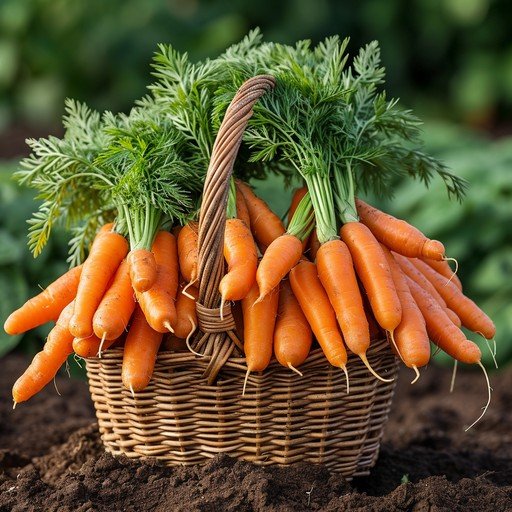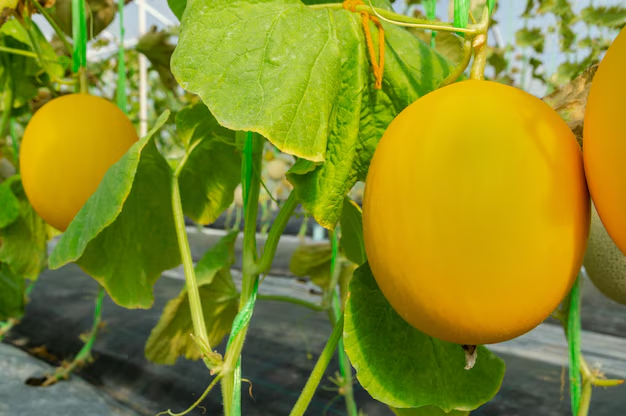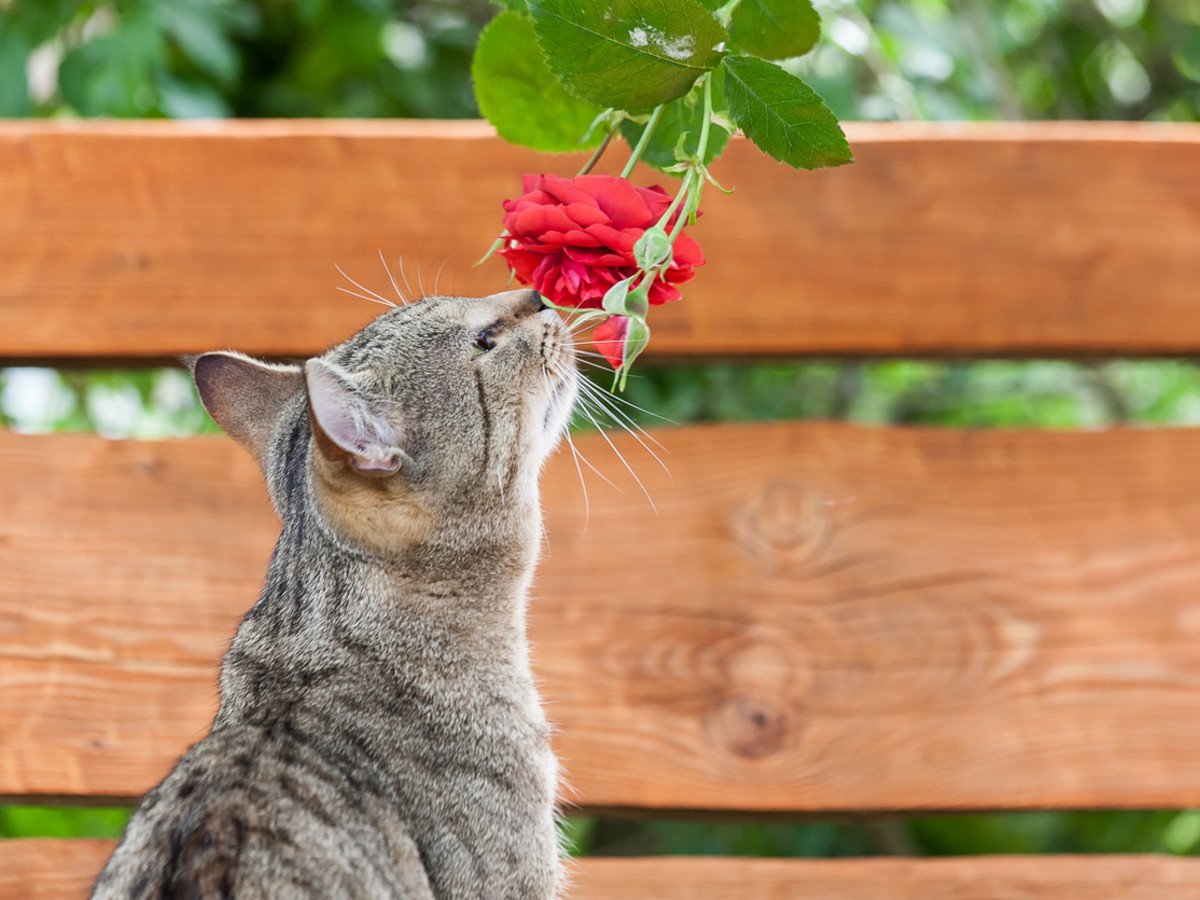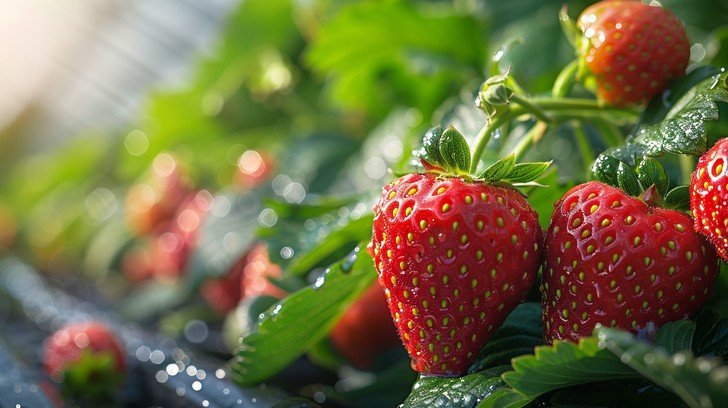How to Grow Carrots in Containers
If you’ve ever thought carrots only grow well in garden beds, think again. With the right setup, you can easily grow carrots in containers right on your patio, balcony, or even a sunny doorstep. Container gardening gives you full control over the soil, moisture, and pests—three factors that make a big difference in growing perfect, straight, and sweet carrots.
In this guide, you’ll learn everything from choosing the right pot and soil mix to planting, caring for, and harvesting carrots successfully in containers.
Why Grow Carrots in Containers
Container gardening isn’t just for flowers and herbs. Growing carrots in pots has become a smart choice for urban gardeners and anyone with limited yard space. Containers allow you to:
-
Control soil quality and texture easily.
-
Avoid issues like rocky or heavy clay soil that cause twisted carrots.
-
Keep pests such as carrot flies and rabbits away.
-
Move containers to get the right sunlight or protect them from harsh weather.
In short, containers make carrot growing cleaner, simpler, and more productive.
(For more easy container ideas, check out our guide on container gardening for beginners.)
Choosing the Right Container
Carrots need depth more than width. When selecting your container:
-
Depth matters: Choose a pot or grow bag that’s at least 12–14 inches deep for most varieties. Short types like ‘Parisian’ or ‘Thumbelina’ can grow in 8–10 inches, but long varieties like ‘Nantes’ or ‘Imperator’ need more space.
-
Drainage is essential: Make sure your container has several holes at the bottom. Carrots dislike soggy roots and will rot if water can’t drain properly.
-
Material options: Plastic pots retain moisture better, while fabric grow bags allow great airflow and root expansion.
-
Size tip: A 10-gallon grow bag or large pot can grow 20–30 carrots comfortably.
If you live in a hot climate, avoid dark containers that absorb excess heat. Lighter colors help keep soil cooler.
Preparing the Perfect Soil Mix
The key to successful container carrots lies in light, loose, and fertile soil. Garden soil is often too heavy, so make your own mix:
DIY Carrot Soil Mix Recipe:
-
1 part high-quality potting soil
-
1 part compost or worm castings
-
½ part coarse sand or perlite for drainage
Mix thoroughly before filling your container. Avoid clumps or stones, which can cause deformed carrots.
Before sowing, moisten the soil evenly—it should feel damp but not muddy.
(For more on soil prep, visit our detailed guide: How to Prepare Garden Soil)
Choosing the Best Carrot Varieties for Containers
Some carrots grow long and slender, while others stay short and round. For container gardening, shorter or medium-length types are easier to manage. Popular varieties include:
-
‘Parisian Market’: Small, round roots with a sweet flavor. Perfect for shallow pots.
-
‘Nantes’: Smooth, cylindrical carrots with a crisp texture.
-
‘Chantenay’: Thick, stubby carrots that thrive in slightly heavier soil.
-
‘Short ‘n Sweet’: Fast-maturing and ideal for cooler months.
Always choose fresh seeds—carrot seeds lose viability quickly after a year.
How to Plant Carrot Seeds in Containers
Carrots grow best from direct seeding, not transplants. Follow these steps:
-
Fill your container to about an inch below the rim with your soil mix.
-
Make shallow furrows about ¼ inch deep and evenly spaced.
-
Sow seeds thinly, about an inch apart. Carrot seeds are tiny, so mix them with a bit of sand for even distribution.
-
Cover lightly with fine soil and mist gently with water.
-
Keep the soil moist during germination, which can take 10–20 days.
Once seedlings appear, thin them to 2–3 inches apart so each carrot has room to grow. Don’t pull out unwanted seedlings—snip them with scissors to avoid disturbing nearby roots.
Light, Watering, and Temperature Tips
Light
Carrots love full sun. Place your container where it gets at least 6–8 hours of sunlight daily. In very hot regions, light afternoon shade helps prevent stress.
Watering
Consistent moisture is critical. Dry soil leads to cracked or bitter roots, while overwatering can cause rot. The trick is to water deeply but not excessively. Stick your finger into the soil—if the top inch feels dry, it’s time to water.
Temperature
Ideal growth happens between 55°F and 75°F (13°C to 24°C). Carrots tolerate mild frost but stop growing in extreme heat.
If you’re gardening in a warm area like Florida or Texas, try sowing in late fall or early spring for best results.
Feeding and Maintenance
Carrots are light feeders, but a little nutrition boost helps them thrive. After seedlings are about 4 weeks old, feed lightly with a balanced organic liquid fertilizer or compost tea every 2–3 weeks. Avoid high-nitrogen fertilizers—they encourage leafy tops instead of roots.
Keep weeds out of the container and gently loosen the soil surface every couple of weeks to improve airflow and water absorption.
When and How to Harvest Carrots
Depending on the variety, carrots are usually ready to harvest 60–80 days after planting.
Here’s how to tell:
-
The tops of the roots often peek slightly above the soil.
-
The leaves are lush and green.
-
The root shoulders look about an inch wide.
To harvest:
-
Moisten the soil slightly a few hours before pulling.
-
Hold the tops gently and twist the carrot from the base to avoid breakage.
-
Rinse off any soil, trim the greens, and store carrots in a cool, dark place.
For sweeter flavor, leave carrots in cooler weather for a week before harvesting—cold temperatures convert starches into natural sugars.
Common Problems and How to Solve Them
-
Forked or twisted roots: Caused by compact soil or stones. Always use fine, loose soil in containers.
-
Tiny or stunted carrots: Often from overcrowding or poor thinning. Space plants properly.
-
Cracked carrots: Irregular watering is the usual culprit. Maintain steady moisture.
-
Pests: Carrot flies are less likely in containers, but still cover seedlings with mesh if you see small black flies hovering.
Succession Planting for Continuous Harvest
Instead of sowing all your seeds at once, plant a few rows every 2–3 weeks. This gives you a steady supply of fresh carrots all season long. When one batch is harvested, refresh the soil with compost and sow again.
(Want more continuous harvest ideas? See our post on succession planting techniques.)
Eco-Friendly Tips for Container Carrot Gardening
-
Reuse rainwater for irrigation to conserve water.
-
Add used coffee grounds sparingly to boost organic matter.
-
Rotate container crops to maintain healthy soil microbes.
-
Compost spent carrot tops and trimmings for next season’s fertilizer.
Final Thoughts
Learning how to grow carrots in containers is one of the most rewarding experiences for any home gardener. With a bit of care, even a small balcony can become a productive mini vegetable patch. You’ll enjoy fresher, tastier carrots than anything from the store—and the satisfaction of knowing you grew them yourself.
So, grab a pot, some carrot seeds, and start today. Your first harvest will taste all the sweeter when it comes from your own hands.








